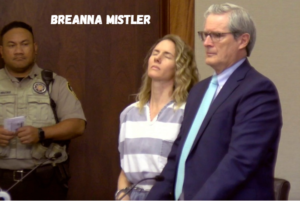Rental Property Management: Best Practices for Successful Landlording
Managing rental properties can be a rewarding venture, providing a steady income stream and long-term financial security. However, successful landlording requires a strategic approach and adherence to best practices to ensure smooth operations and tenant satisfaction. This guide outlines essential tips and strategies for effective rental property management.
Contents [hide]
- 1 1. Screen Tenants Thoroughly
- 2 2. Set Clear Lease Terms
- 3 3. Maintain the Property
- 4 4. Effective Rent Collection
- 5 5. Handle Tenant Issues Professionally
- 6 6. Stay Informed and Compliant
- 7 7. Insurance and Risk Management
- 8 8. Professional Property Management
- 9 9. Market Your Rental Property Effectively
- 10 10. Build Positive Tenant Relationships
- 11 Conclusion
1. Screen Tenants Thoroughly
a. Background and Credit Checks
Conduct comprehensive background and credit checks on prospective tenants. Verify their employment, income, rental history, and look for any red flags such as prior evictions or criminal records. This helps ensure you select reliable tenants who can pay rent on time and take care of your property.
b. Personal References
Ask for personal references from previous landlords or employers. Contacting these references can provide additional insights into the tenant’s character and reliability.
c. Application Process
Use a detailed rental application form to gather necessary information from applicants. This form should include questions about their employment, income, rental history, and personal references.
2. Set Clear Lease Terms
a. Draft a Comprehensive Lease Agreement
Create a thorough lease agreement that outlines all terms and conditions of the rental arrangement. Include details such as rent amount, payment due date, lease duration, security deposit, maintenance responsibilities, and rules regarding pets, smoking, and subletting.
b. Legal Compliance
Ensure your lease agreement complies with local, state, and federal laws. Consult with a legal professional to review the lease and make necessary adjustments to avoid potential legal issues.
c. Clear Communication
Communicate all lease terms clearly to tenants before they sign. Ensure they understand their responsibilities and the consequences of violating lease terms.
3. Maintain the Property
a. Regular Inspections
Conduct regular property inspections to identify maintenance issues early and ensure the property is well-maintained. Schedule inspections at least twice a year and after a tenant moves out.
b. Prompt Repairs
Address maintenance requests and repairs promptly to maintain a safe and habitable living environment. Delayed repairs can lead to further damage and tenant dissatisfaction.
c. Preventive Maintenance
Implement a preventive maintenance schedule to address potential issues before they become major problems. Regularly check and service HVAC systems, plumbing, electrical systems, and other critical components.
4. Effective Rent Collection
a. Clear Payment Policies
Establish clear rent payment policies and communicate them to tenants. Include details on acceptable payment methods, due dates, late fees, and consequences for missed payments.
b. Online Payment Options
Offer online payment options to make it convenient for tenants to pay rent. Digital payments can reduce the risk of late payments and streamline the collection process.
c. Enforce Late Fees
Consistently enforce late fees to encourage timely rent payments. Being lenient with late fees can lead to habitual late payments and cash flow issues.
5. Handle Tenant Issues Professionally
a. Open Communication
Maintain open and respectful communication with tenants. Address their concerns and issues promptly to foster a positive landlord-tenant relationship.
b. Conflict Resolution
Handle conflicts and disputes professionally and impartially. Listen to both sides, document the issues, and seek fair resolutions.
c. Eviction Process
In cases where eviction becomes necessary, follow the legal eviction process meticulously. Ensure you have documented all violations and have given proper notice as required by law.
6. Stay Informed and Compliant
a. Understand Landlord-Tenant Laws
Familiarize yourself with local, state, and federal landlord-tenant laws. Stay updated on changes in legislation to ensure your practices remain compliant.
b. Fair Housing Laws
Adhere to Fair Housing Laws, which prohibit discrimination based on race, color, national origin, religion, sex, familial status, or disability. Ensure your tenant selection process is fair and unbiased.
c. Licensing and Permits
Ensure you have all necessary licenses and permits required for operating rental properties in your area. This may include rental licenses, occupancy permits, and compliance with local housing codes.
7. Insurance and Risk Management
a. Landlord Insurance
Obtain comprehensive landlord insurance to protect against property damage, liability claims, and loss of rental income. Regularly review and update your insurance policy to ensure adequate coverage.
b. Tenant Insurance
Encourage or require tenants to obtain renter’s insurance. This can protect their personal belongings and reduce your liability in case of accidents or damages.
c. Risk Assessment
Conduct regular risk assessments to identify potential hazards and implement measures to mitigate them. This can include installing smoke detectors, securing entry points, and addressing safety concerns.
8. Professional Property Management
a. Consider Hiring a Property Manager
If managing the property becomes overwhelming or time-consuming, consider hiring a professional property manager. A property manager can handle day-to-day operations, tenant interactions, and maintenance, allowing you to focus on other priorities.
b. Choose the Right Property Manager
Select a property management company with a good reputation and experience in managing similar properties. Verify their credentials, references, and service offerings before making a decision.
c. Set Clear Expectations
Clearly define the responsibilities and expectations with your property manager. Establish regular communication channels and review performance periodically.
9. Market Your Rental Property Effectively
a. Attractive Listings
Create compelling and accurate rental listings with high-quality photos and detailed descriptions. Highlight key features, amenities, and the benefits of the location.
b. Online Platforms
List your rental property on popular online rental platforms to reach a wider audience. Utilize social media and real estate websites to maximize visibility.
c. Competitive Pricing
Research the local rental market to set competitive and realistic rental rates. Overpricing can lead to prolonged vacancies, while underpricing can result in lower returns.
10. Build Positive Tenant Relationships
a. Foster Community
Create a sense of community by organizing events or providing communal spaces. A positive community atmosphere can enhance tenant satisfaction and retention.
b. Responsive Management
Be responsive and attentive to tenant needs and concerns. Promptly addressing their issues demonstrates that you value and respect them.
c. Lease Renewal Incentives
Offer incentives for lease renewals, such as rent discounts or property upgrades. This can encourage tenants to stay longer and reduce turnover rates.
Conclusion
Successful rental property management requires a combination of strategic planning, effective communication, and a commitment to maintaining high standards.
By screening tenants thoroughly, setting clear lease terms, maintaining the property, handling tenant issues professionally, staying informed about legal requirements, and considering professional management when necessary, you can achieve a successful and profitable landlording experience.
Following these best practices will not only enhance the value of your property but also ensure a positive and productive relationship with your tenants.






















































Post Comment